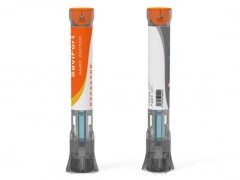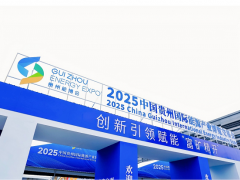據(jù)油價(jià)網(wǎng)2021年7月17日報(bào)道,此時(shí)此刻,2020年的艱難時(shí)期遠(yuǎn)遠(yuǎn)落后于能源行業(yè)。 去年,能源行業(yè)出現(xiàn)了許多過早的訃告,但在2021年,能源行業(yè)無疑將煥發(fā)出了勃勃生機(jī)。
能源行業(yè)從2020年第四季度開始大幅增長。 但這仍足以讓能源類股票在2021年上半年保持首位。
Energy Select Sector SPDR ETF (XLE)追蹤標(biāo)準(zhǔn)普爾500指數(shù)中的能源公司指數(shù)。 XLE代表來自不同子行業(yè)(如綜合、石油生產(chǎn)、設(shè)備服務(wù))的大型能源公司的股票。 因此,對于保守的能源投資者來說,這是一個(gè)很好的基準(zhǔn)。 XLE持有的最大股份包括埃克森美孚、雪佛龍、康菲、EOG資源和斯倫貝謝。
今年至今,能源領(lǐng)域的每個(gè)界別分組都跑贏了標(biāo)準(zhǔn)普爾500指數(shù)。
根據(jù)本文作者用來分析公司的數(shù)據(jù)提供商FactSet的數(shù)據(jù),今年上半年,上游公司的平均漲幅為112.1%。 這些上游公司是生產(chǎn)和儲存石油和天然氣的公司。
一些規(guī)模最小的石油和天然氣生產(chǎn)商位居榜首。 今年上半年回報(bào)率至少達(dá)到300%的公司包括拉雷多石油公司(+371.0%)、環(huán)能源公司(+351.6%)、Callon石油公司(+334.4%)和SM能源公司(+302.7%)。
在FactSet歸類為“中游”的55家公司中,平均回報(bào)率為47.0%。 其中表現(xiàn)最好的是Summit 中游合作伙伴公司,該公司今年上半年的總回報(bào)率為143.2%。 在整個(gè)中游集團(tuán)中,只有一家公司——NGL Partners LP——上半年的回報(bào)率為負(fù)(-0.8%)。
綜合石油巨頭平均上漲29.2%。 在過去幾年表現(xiàn)落后于其他公司的埃克森美孚公司今年上半年表現(xiàn)最好,總回報(bào)率達(dá)到了57.9%。
三大煉油商馬拉松石油公司、瓦萊羅公司和菲利普斯66的平均漲幅為38.8%。 馬拉松石油公司表現(xiàn)最好,為49.2%。
能源行業(yè)的上漲勢頭在第二季度確實(shí)有所放緩,第三季度早些時(shí)候該行業(yè)也略有回落。 該行業(yè)下半年的命運(yùn)將與油價(jià)密切相關(guān),目前油價(jià)遠(yuǎn)高于行業(yè)預(yù)計(jì)的年中水平。
推動(dòng)油價(jià)上漲的罪魁禍?zhǔn)兹匀皇敲绹氖彤a(chǎn)量,目前美國的石油產(chǎn)量仍比新冠肺炎疫情大流行前的峰值低了100多萬桶/天。 與此同時(shí),美國6月份對石油產(chǎn)品的需求幾乎回到了創(chuàng)紀(jì)錄水平。 正如我們一再看到的,供需之間的微小失衡可能會(huì)對油價(jià)產(chǎn)生巨大影響。
李峻 編譯自 油價(jià)網(wǎng)
原文如下:
2021 Has Been A Stellar Year For Energy Investors
The rocky times of 2020 are well behind the energy sector at this point. Last year there were many premature obituaries written for the energy sector, but it has certainly shown plenty of life in 2021.
The energy sector has soared from the last quarter of 2020. After performing as the top S&P 500 sector for two straight quarters, the energy sector slipped to third place in the recently-completed second quarter. But that was still good enough to keep energy in first place for the first half of 2021.
The Energy Select Sector SPDR ETF (XLE) tracks an index of energy companies in the S&P 500. The XLE represents the stocks of large energy companies from different sub-sectors (e.g., integrated, oil production, equipment services). It is, therefore, a good benchmark for conservative energy investors. Some of the XLE’s biggest holdings are ExxonMobil, Chevron, ConocoPhillips, EOG Resources, and Schlumberger.
Every subsector of the energy sector has outperformed the S&P 500 in 2021.
According to data provider FactSet — which I use to analyze companies — the average upstream company gained 112.1% in the first half of 2021. These are the companies that produce and store oil and gas.
Some of the smallest oil and gas producers led the pack. Companies returning at least 300% in the first half include Laredo Petroleum (+371.0%), Ring Energy (+351.6%), Callon Petroleum (+334.4%), and SM Energy (+302.7%).
Among the 55 companies that FactSet classifies as “midstream”, the average return was 47.0%. Best among the group was Summit Midstream Partners, which generated a total first half return of 143.2%. only one company in the entire midstream group — NGL Partners LP — had a negative return in the first half (-0.8%).
The integrated supermajors averaged a gain of 29.2%. After underperforming the rest of the group in recent years, the best performer in the first half was ExxonMobil with a total return of 57.9%.
The Big Three refiners — Marathon Petroleum, Valero, and Phillips 66 — gained an average of 38.8% for the half. Marathon was the best performer with a gain of 49.2%.
Momentum for the energy sector did slow in the second quarter, and the sector has pulled back a bit in the early days of the third quarter. The sector’s fate in the second half will be closely tied to oil prices, which are well ahead of where I thought they would be at the year’s midpoint.
The primary culprit driving oil prices higher remains U.S. oil production that is still down more than a million barrels per day from the pre-pandemic peak. Meanwhile, U.S. demand for petroleum products in June was almost back to record levels. As we have seen time and time again, small imbalances between supply and demand can have enormous impacts on oil prices.
免責(zé)聲明:本網(wǎng)轉(zhuǎn)載自其它媒體的文章,目的在于弘揚(yáng)石化精神,傳遞更多石化信息,并不代表本網(wǎng)贊同其觀點(diǎn)和對其真實(shí)性負(fù)責(zé),在此我們謹(jǐn)向原作者和原媒體致以敬意。如果您認(rèn)為本站文章侵犯了您的版權(quán),請與我們聯(lián)系,我們將第一時(shí)間刪除。







